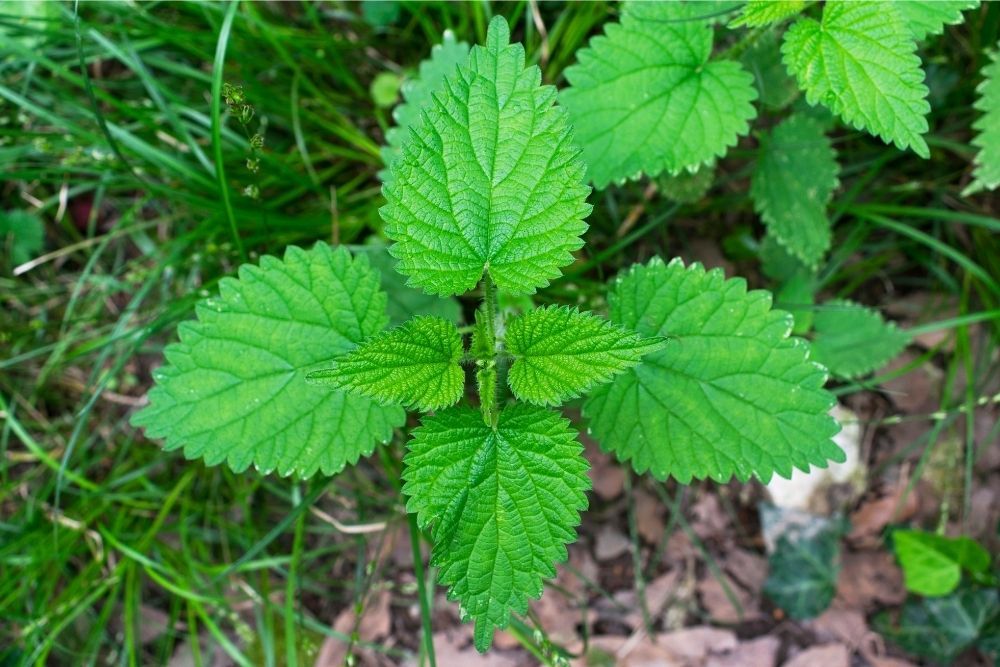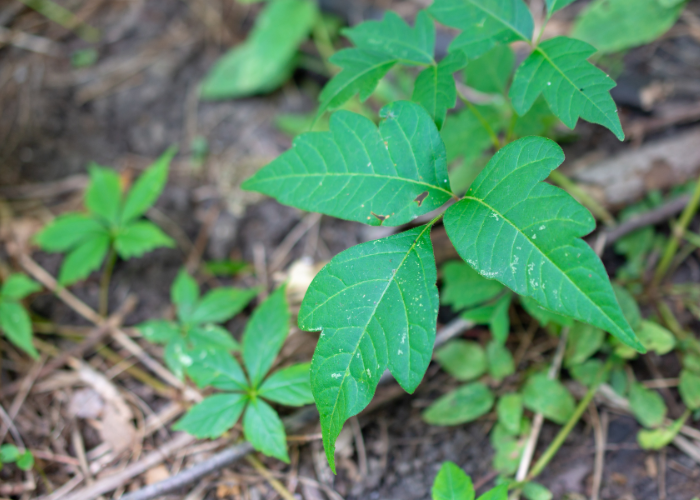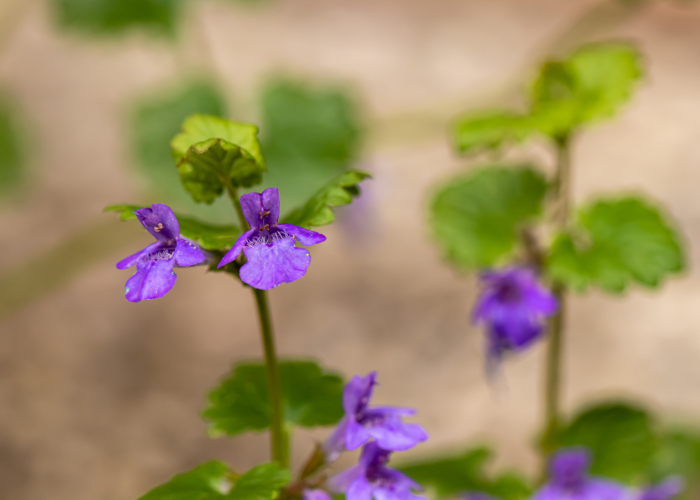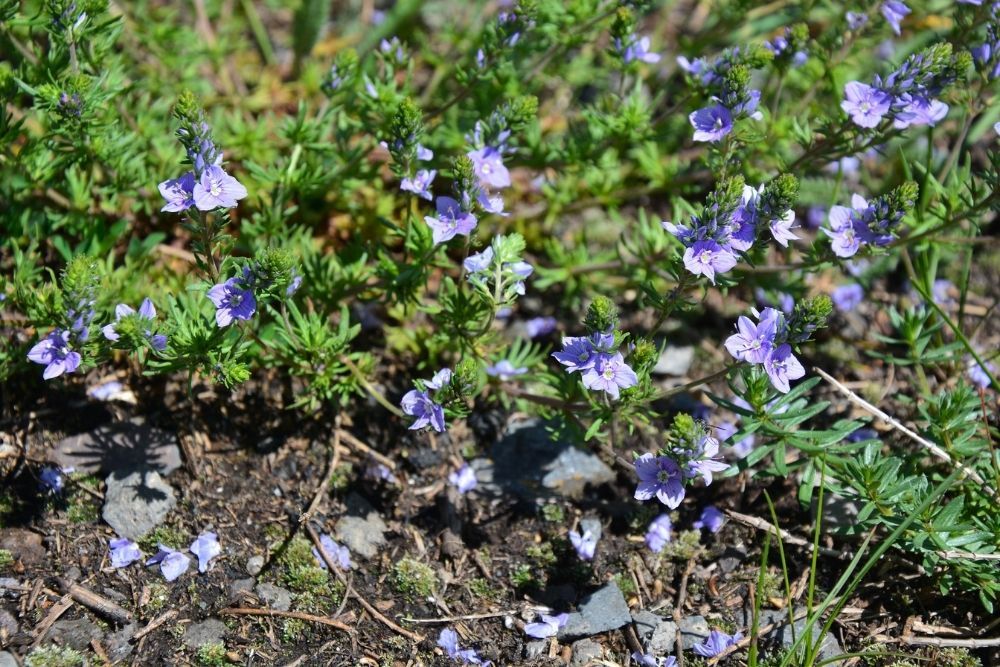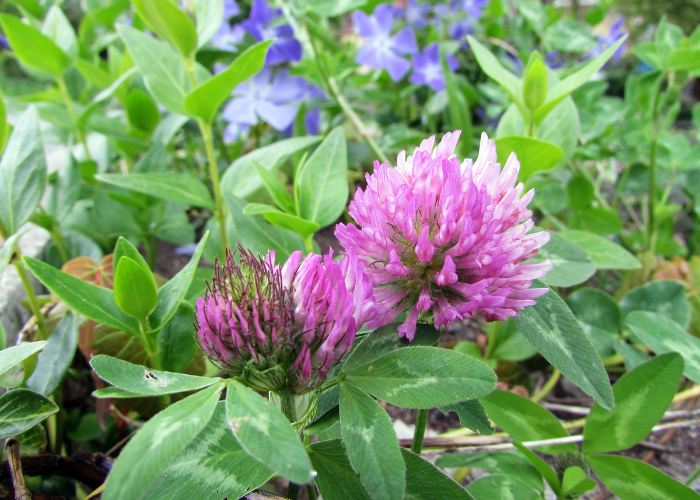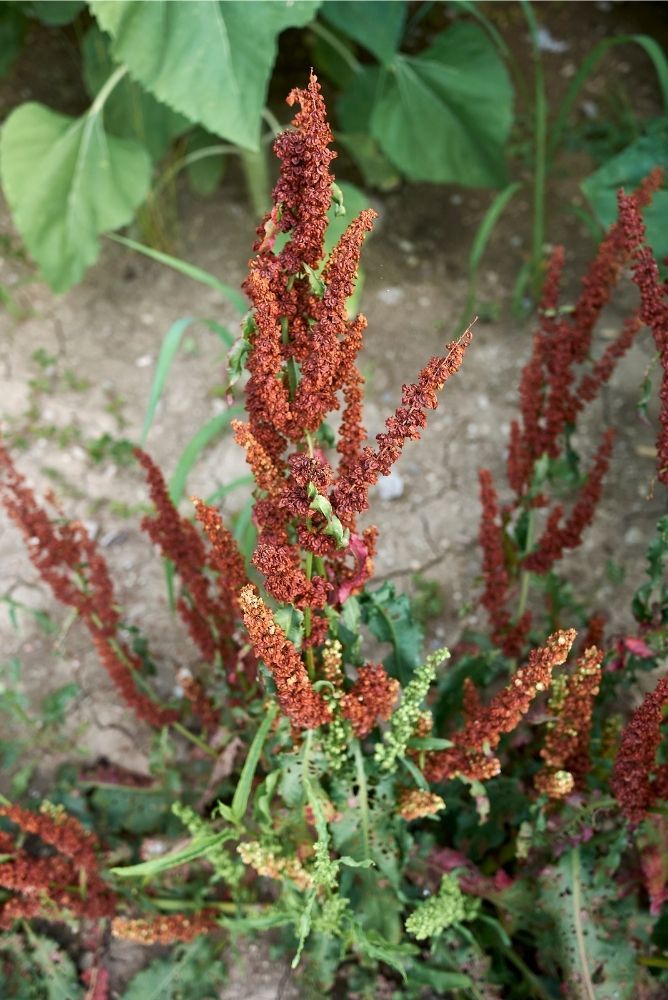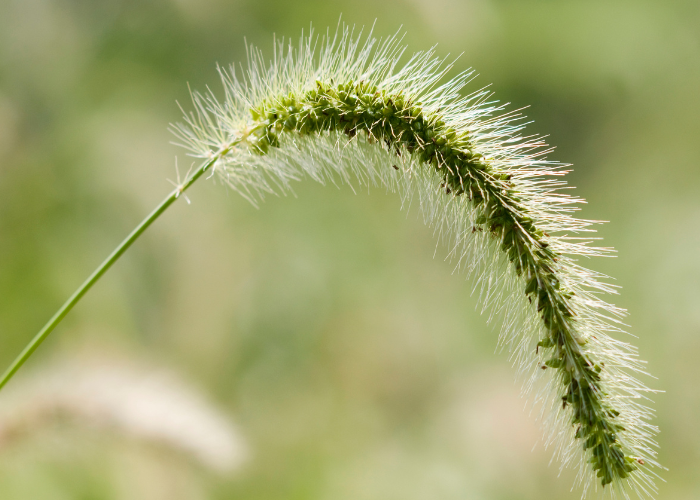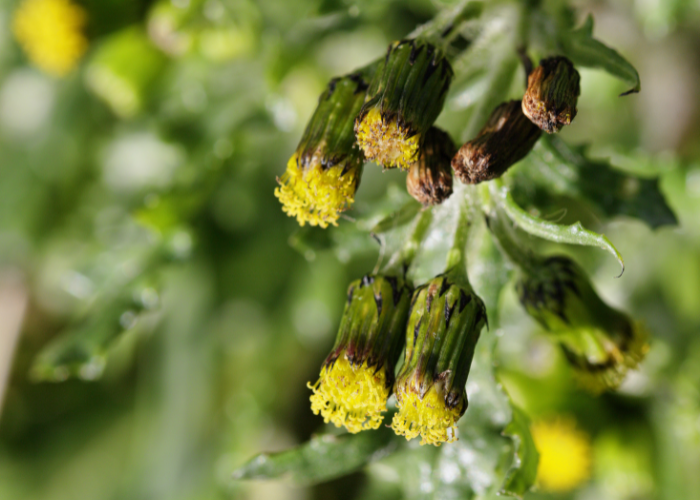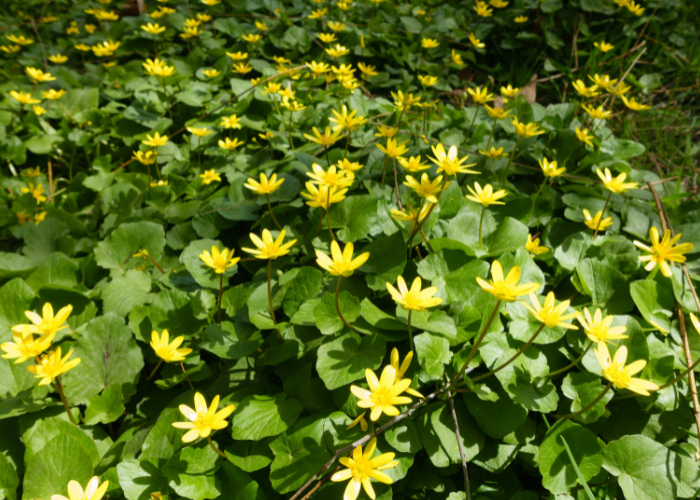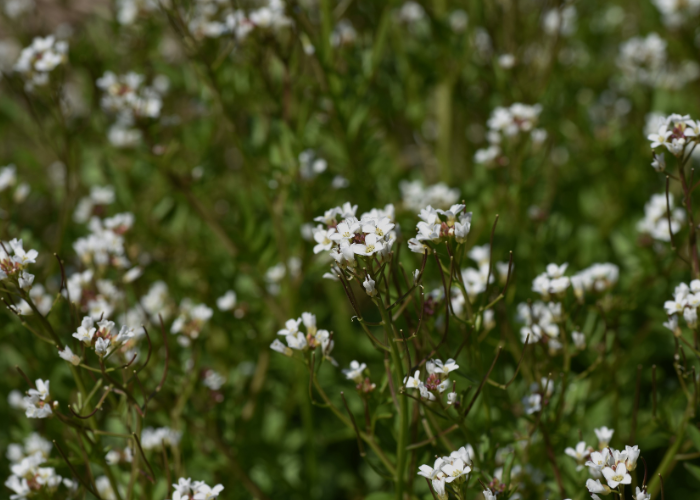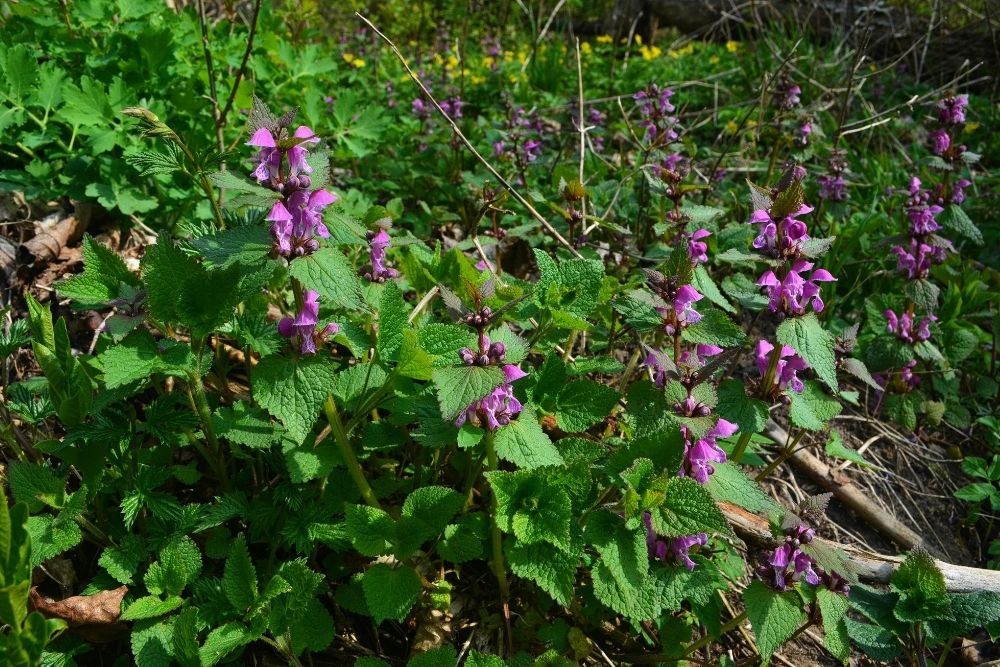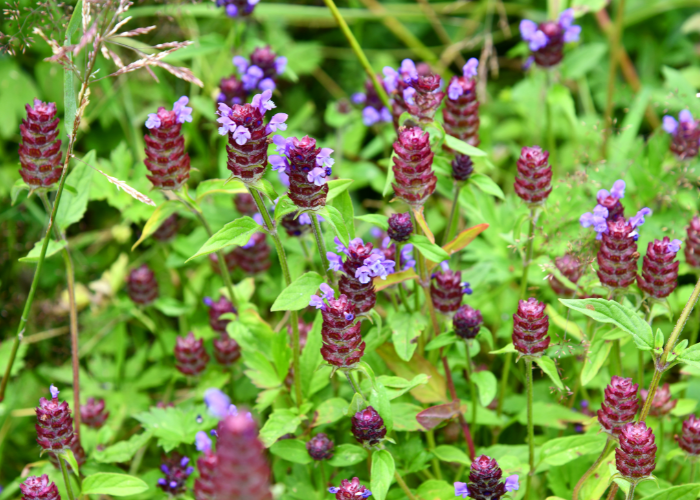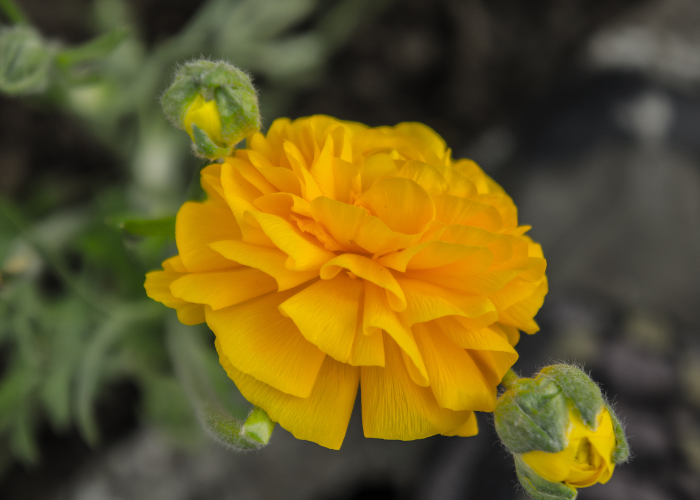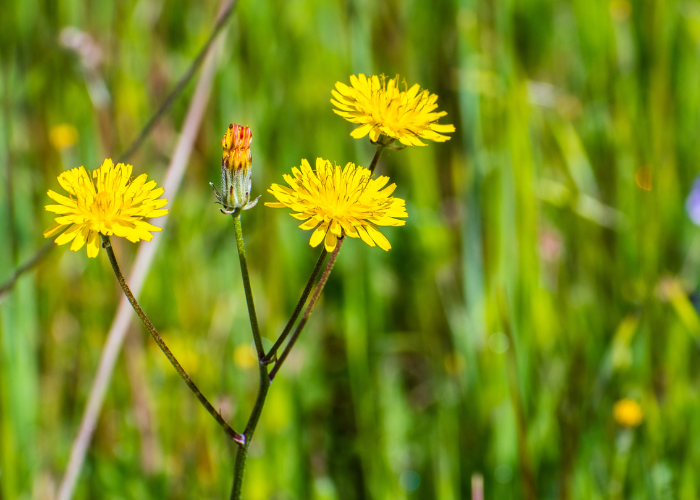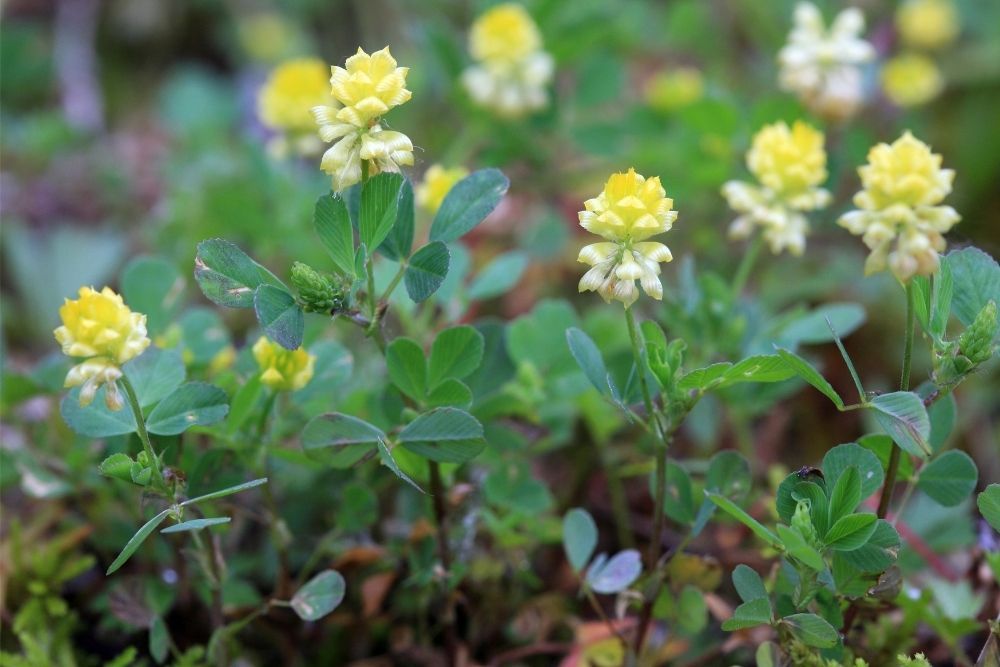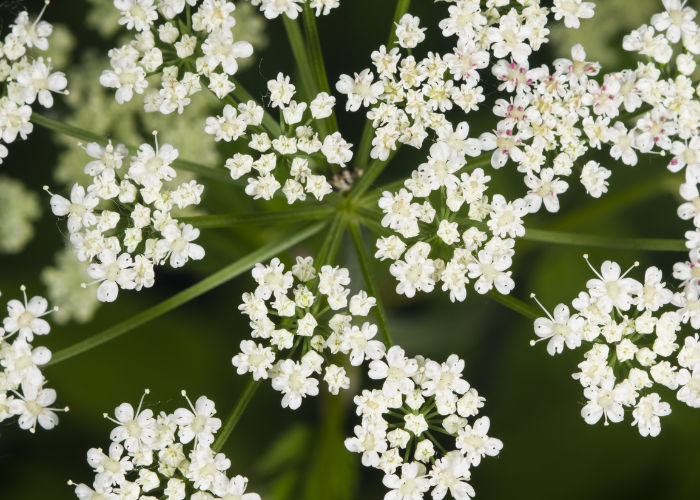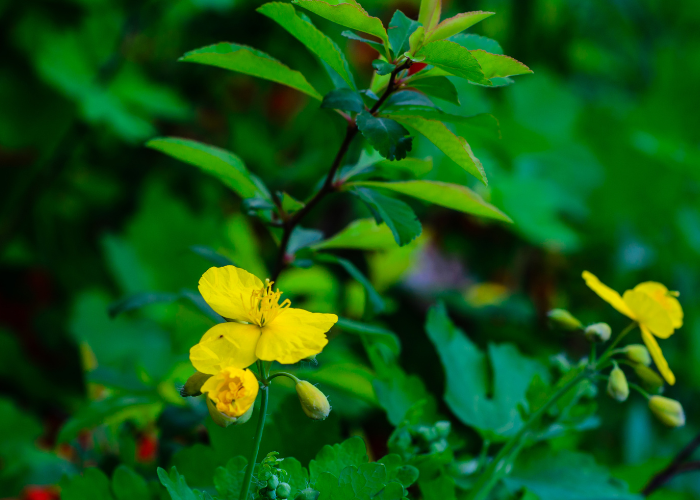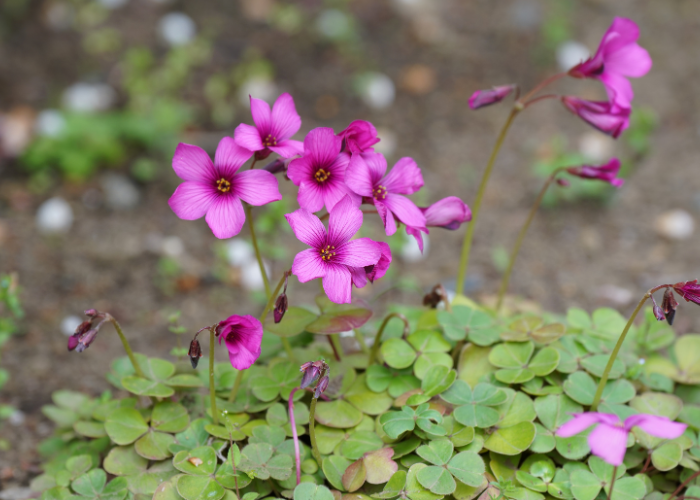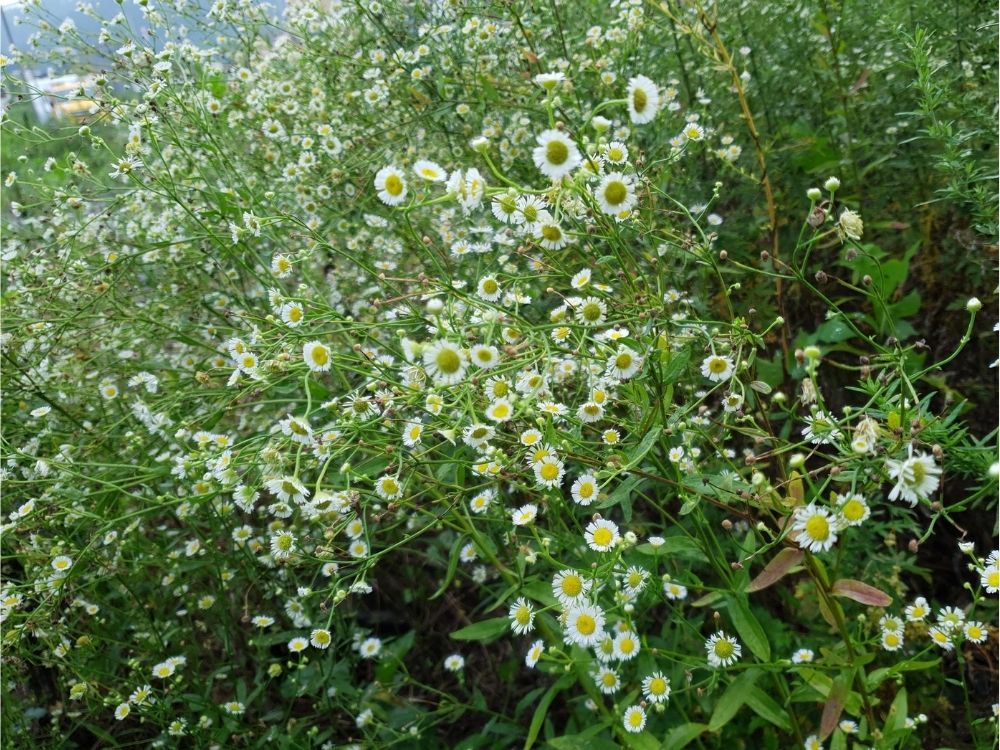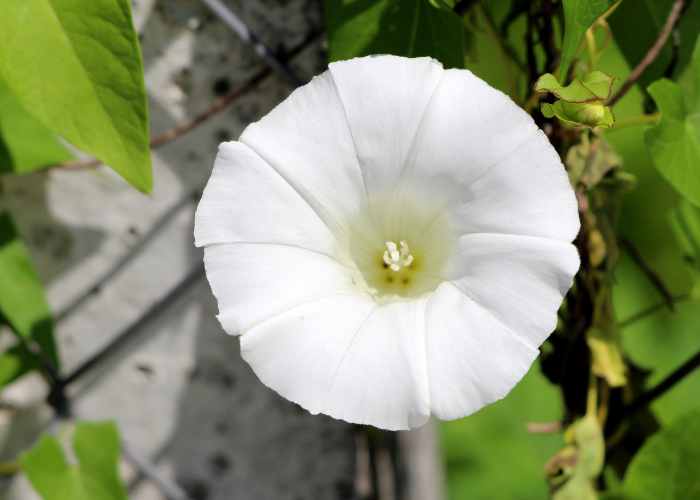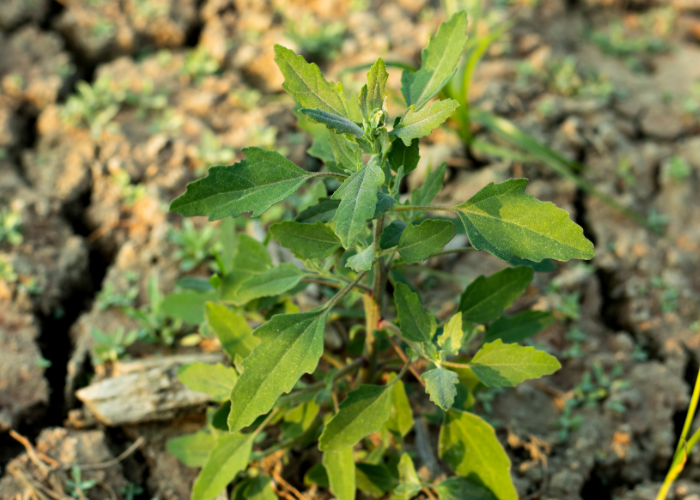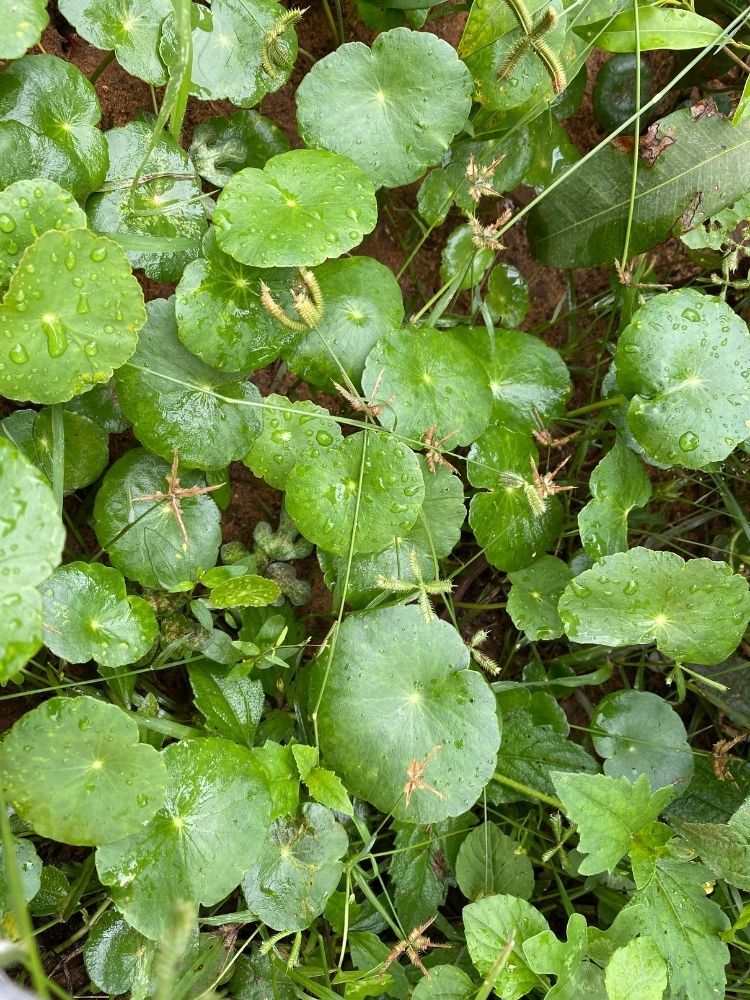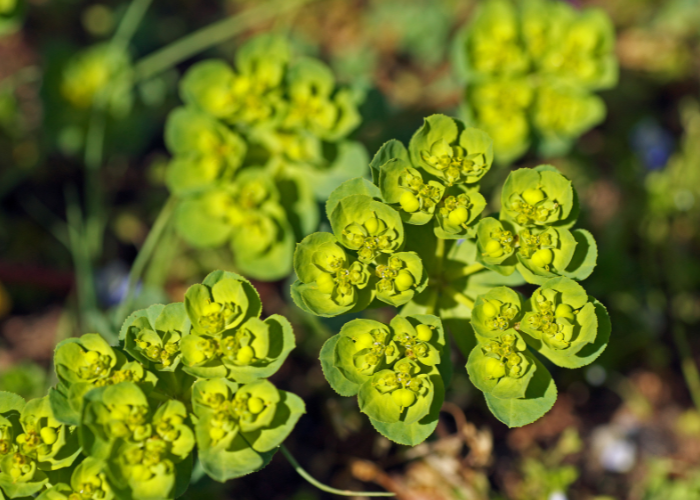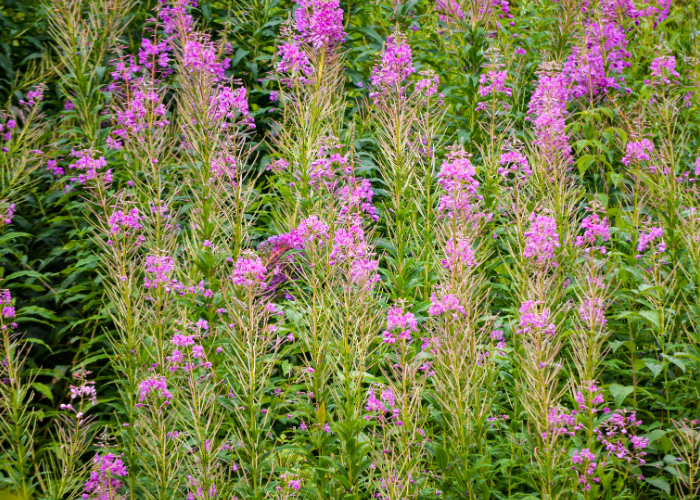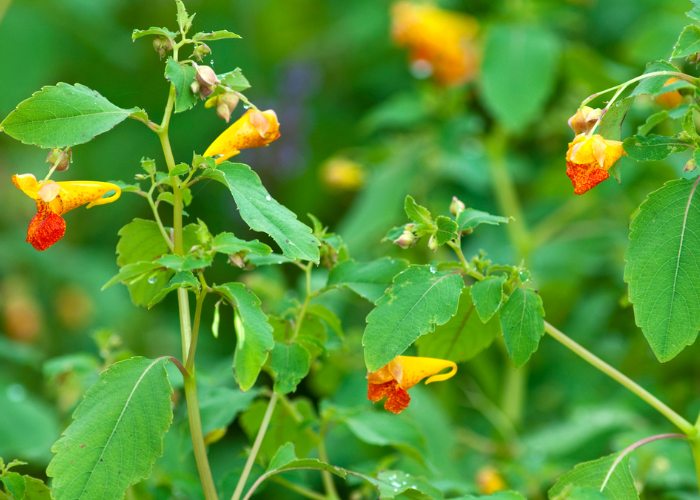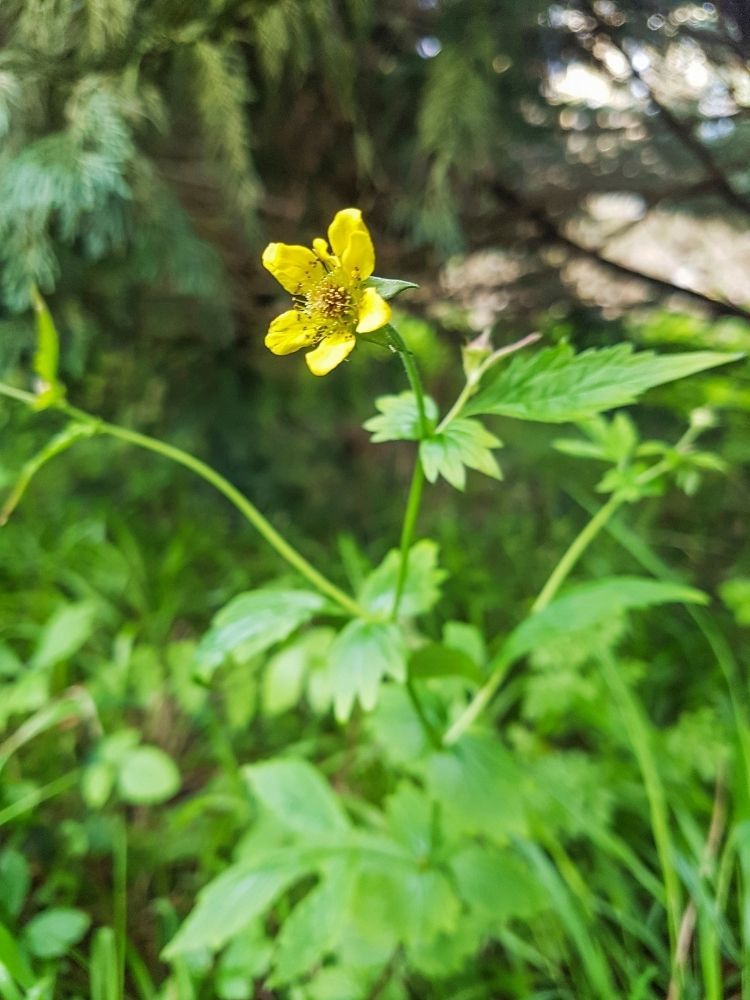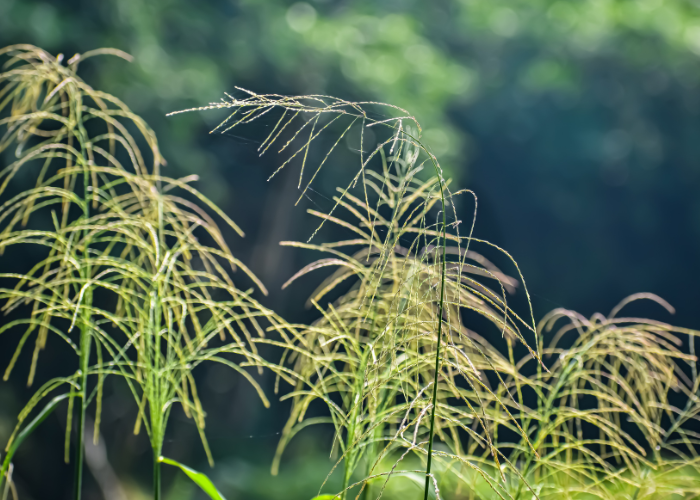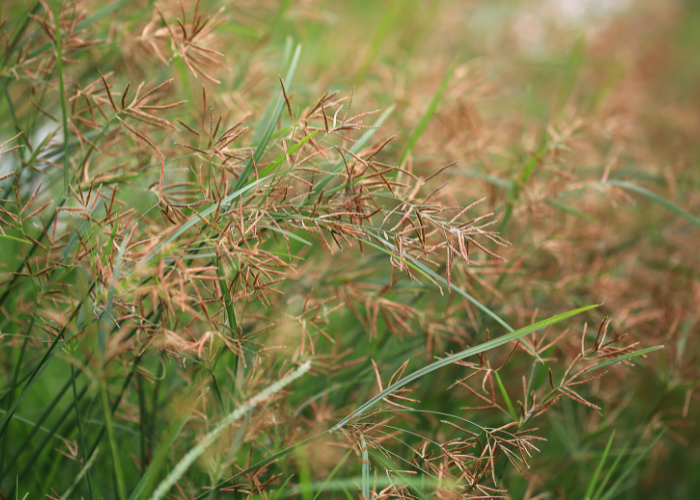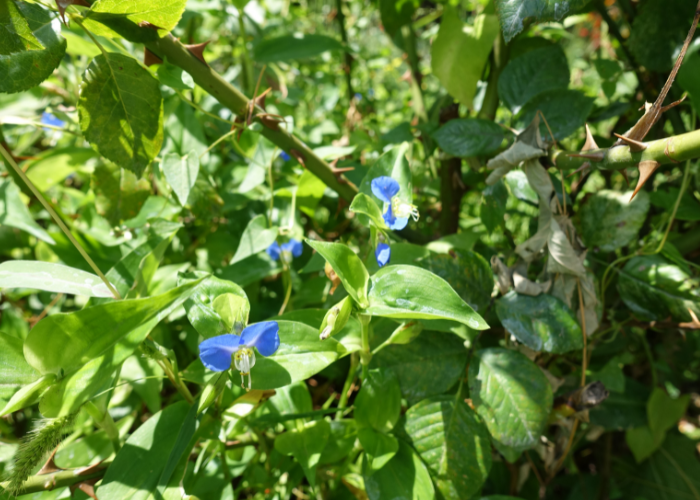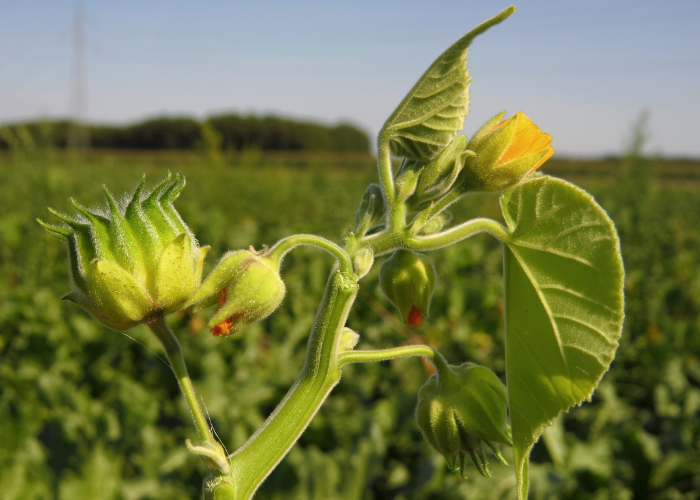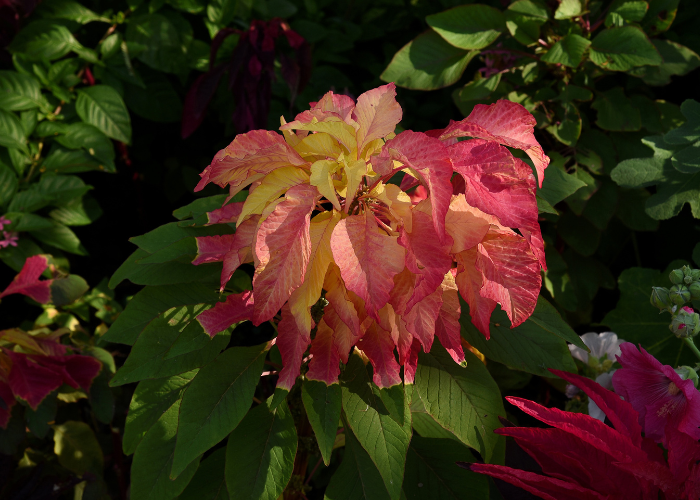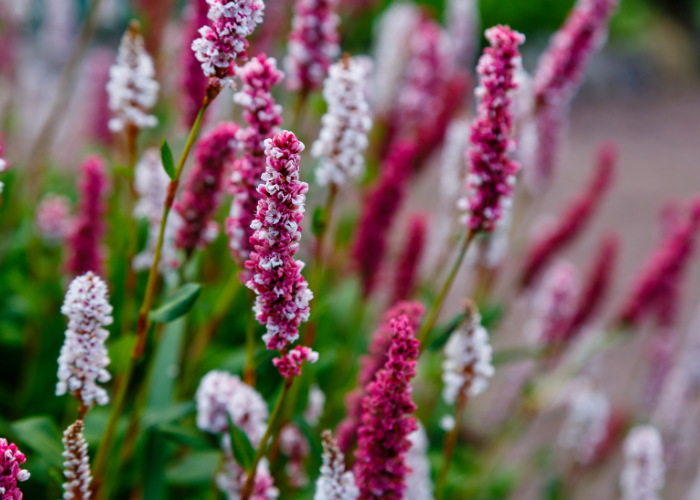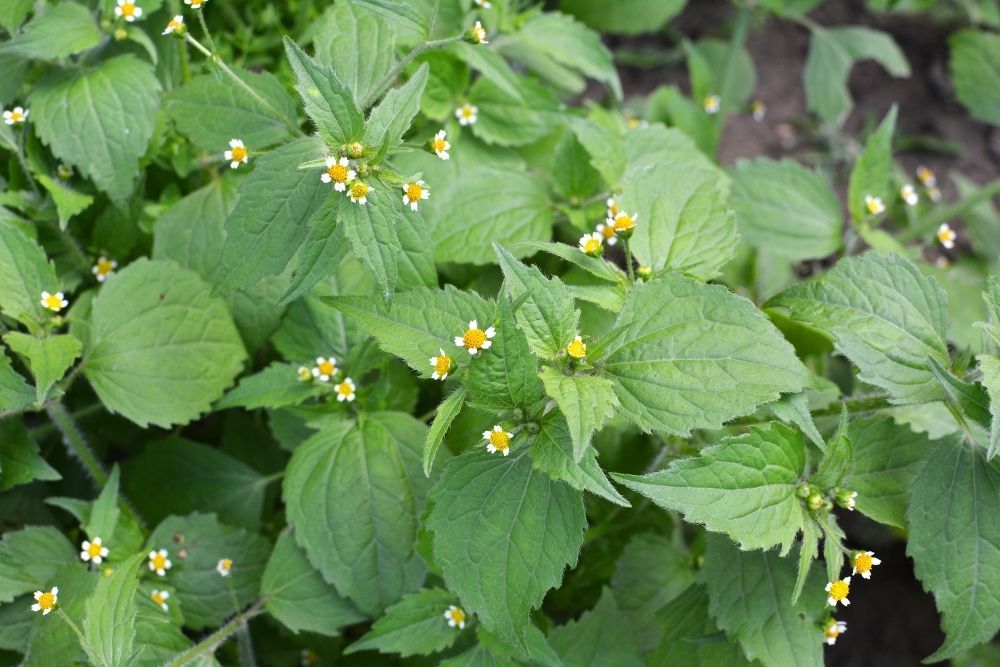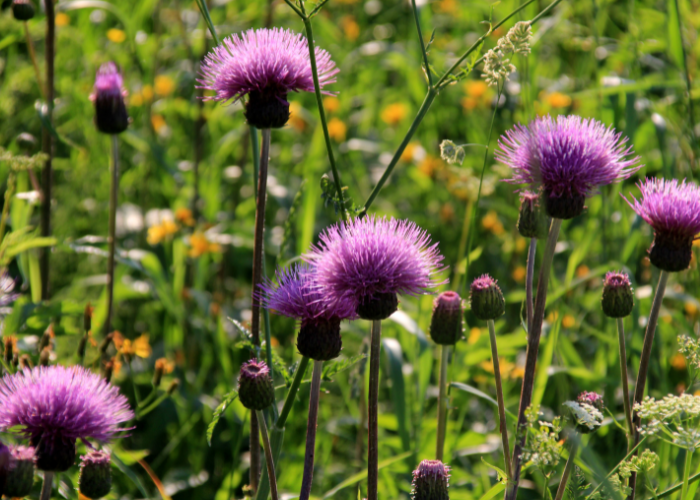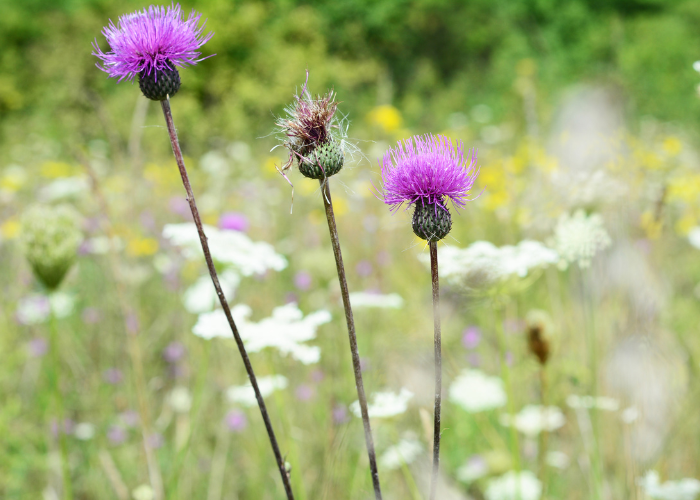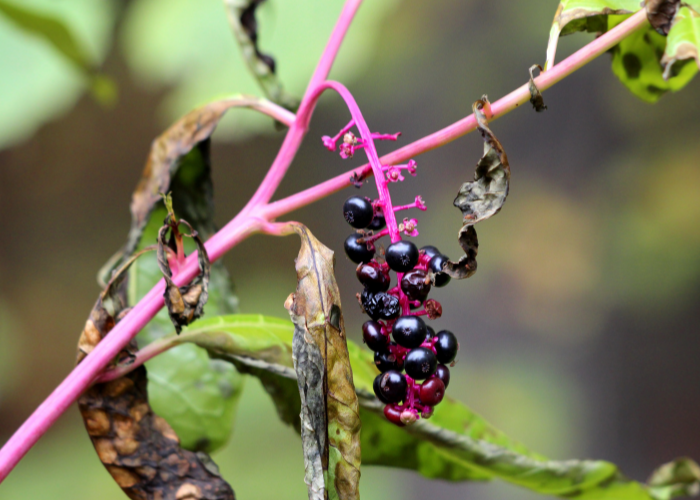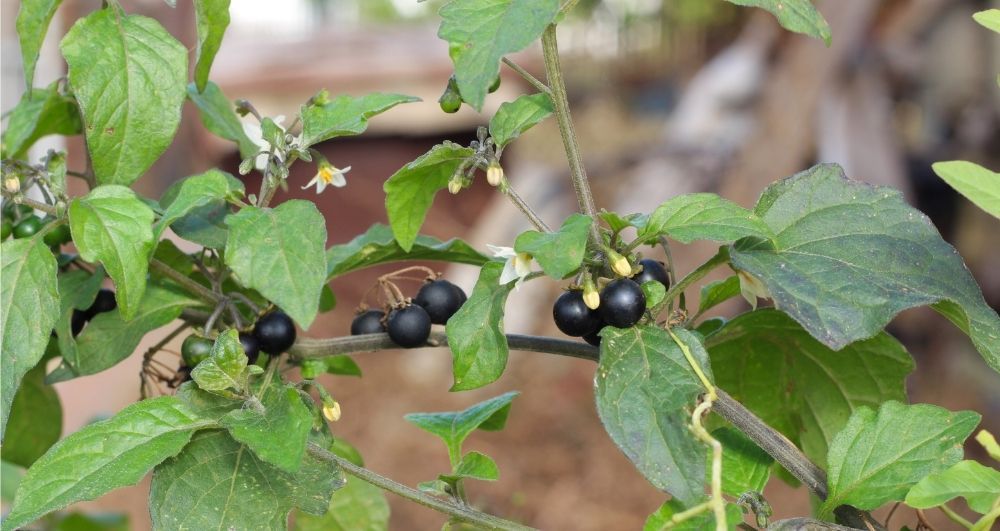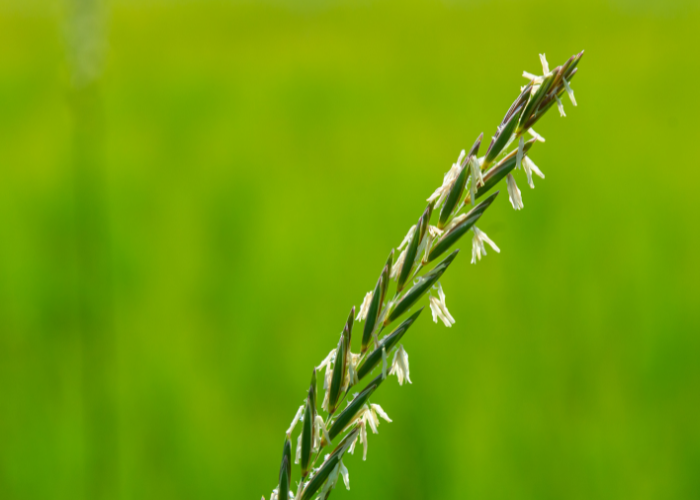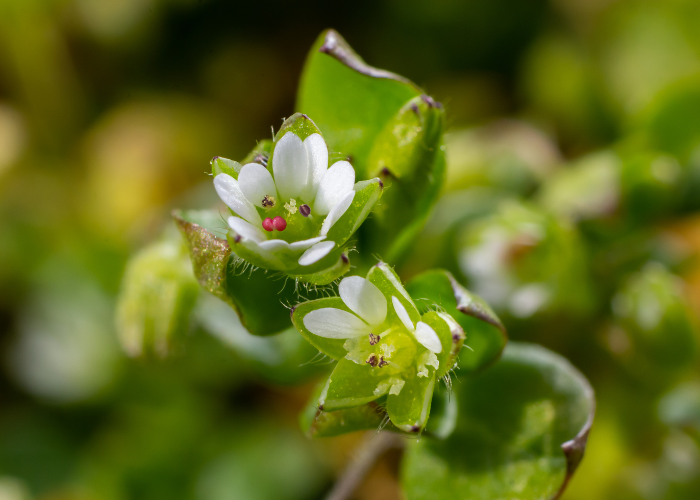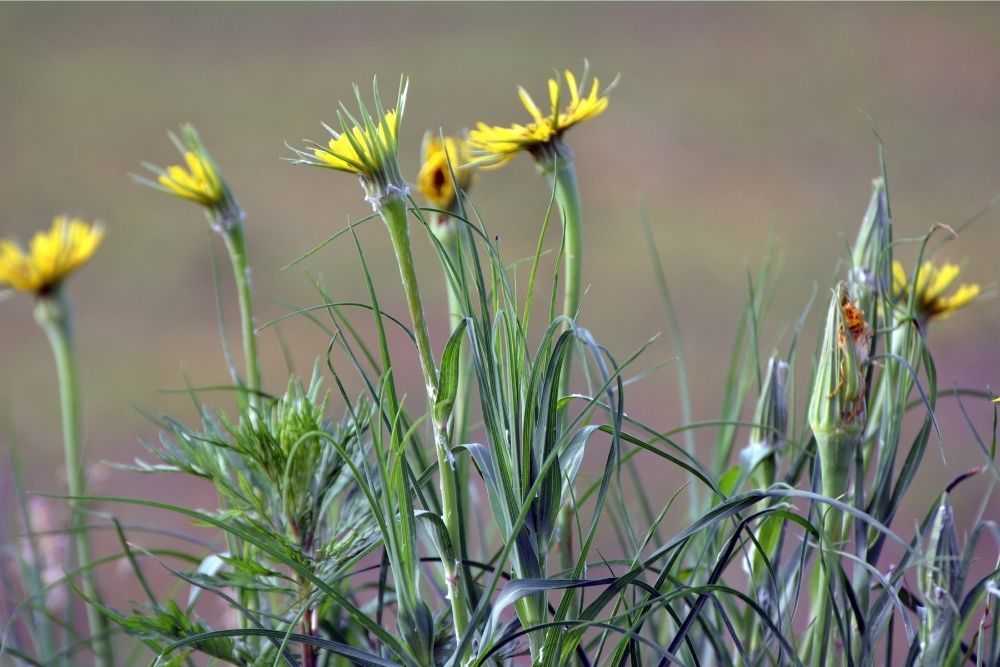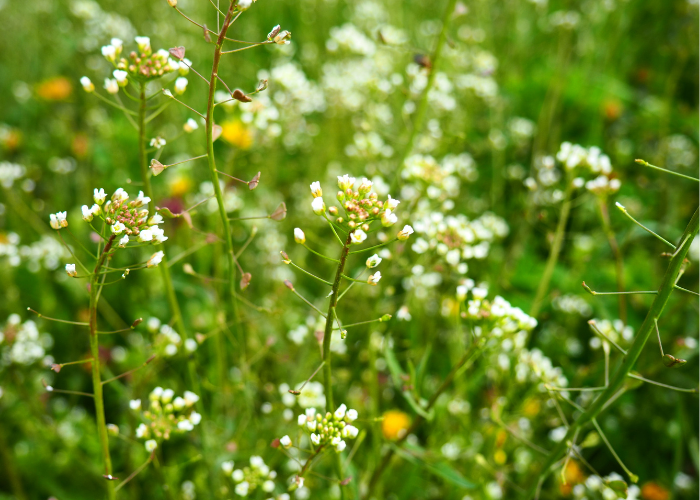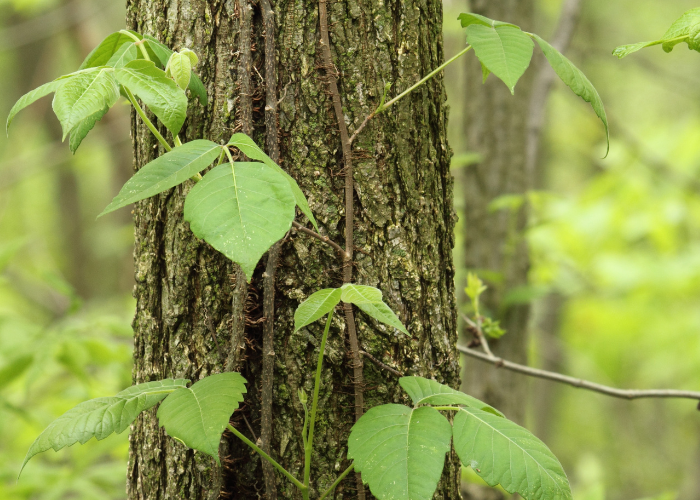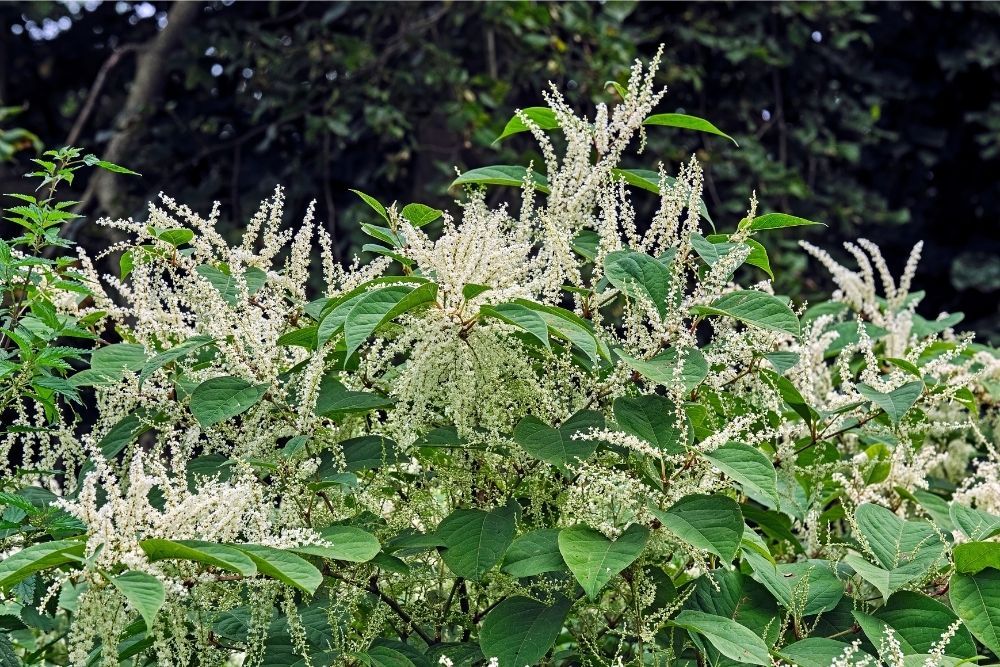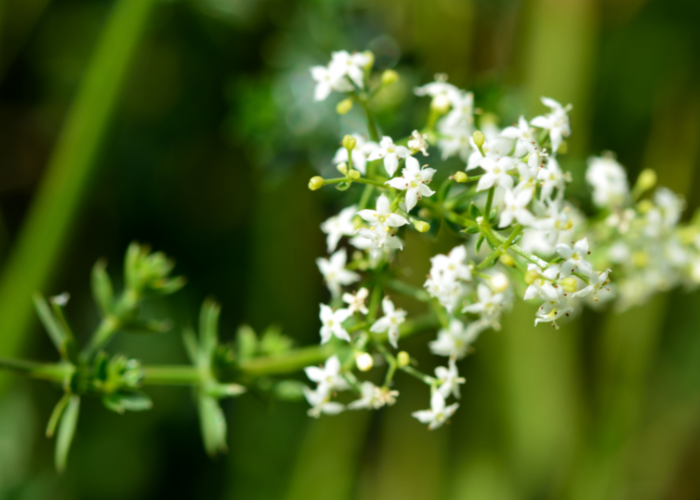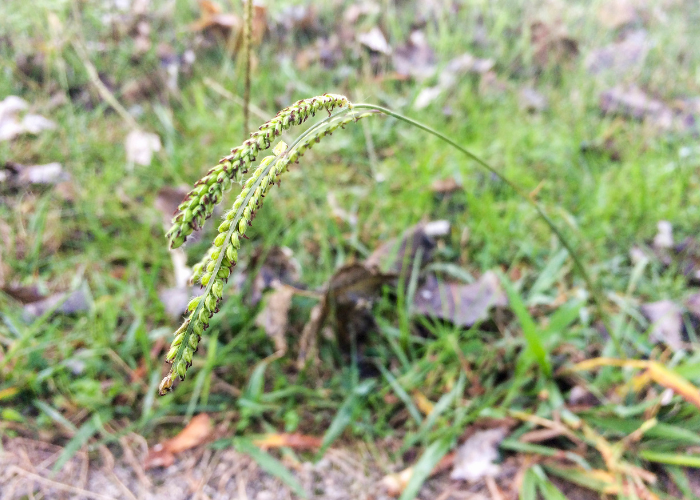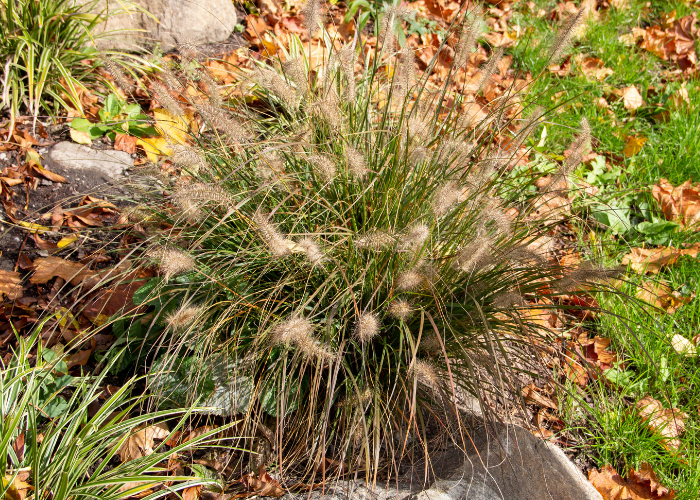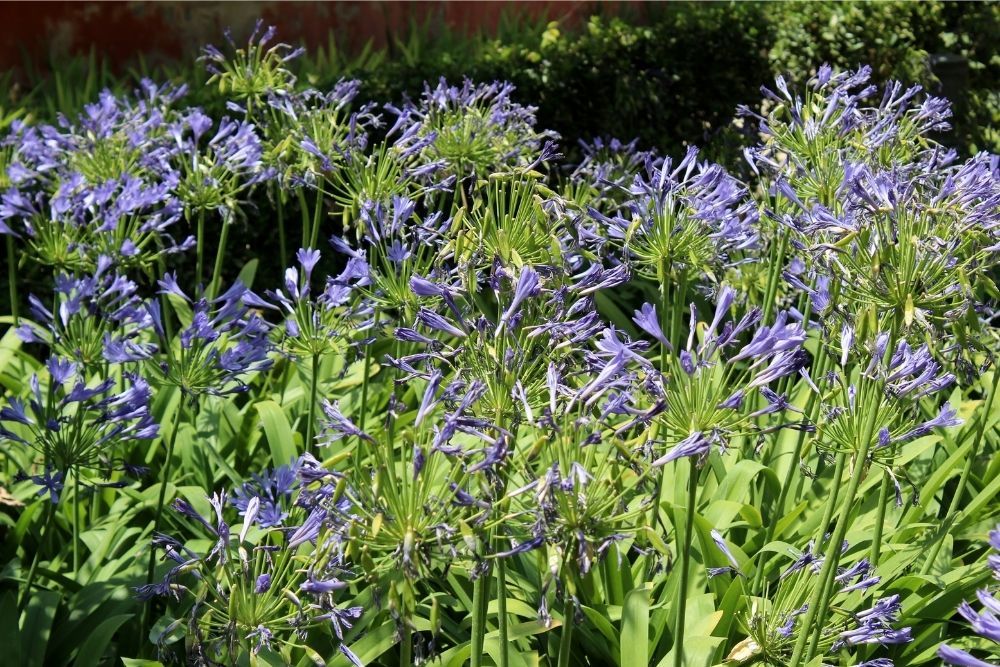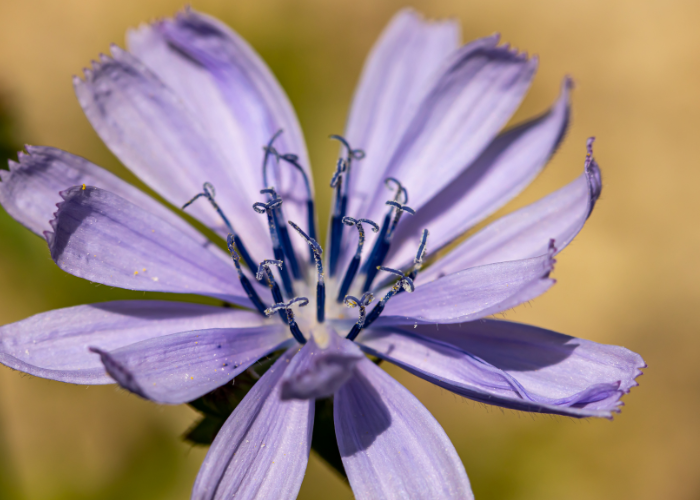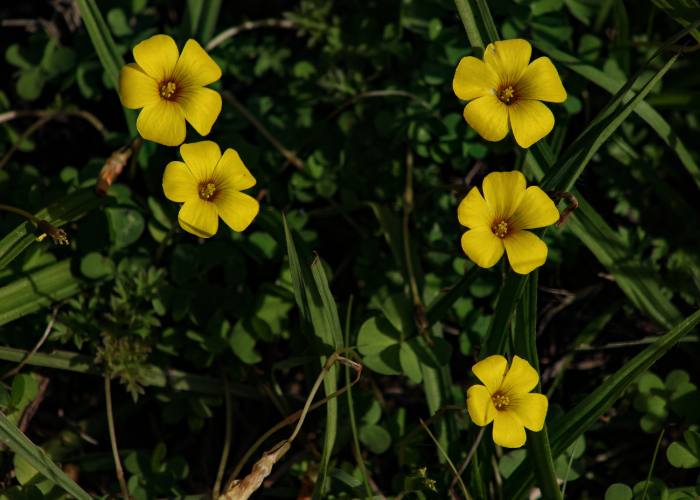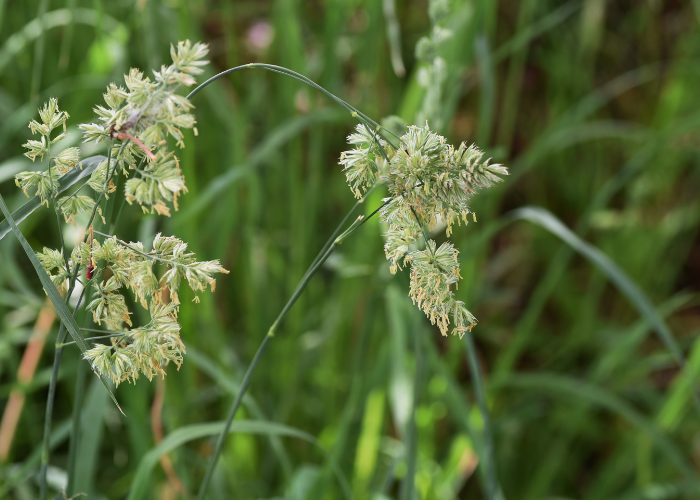
Weeds, weeds, everywhere. We just can’t escape them. They’re destroying our lawns and springing up in the gaps in our patios. We know they’re unwanted, but we often can’t identify the exact plant species.
This article discusses 70 common garden weeds, including what they look like, where they grow, and something you may not have known about these troublesome plants!
1. Stinging Nettle
Botanical Name: Urtica dioica
Height: 1 – 2 metres
Notes: The Stinging Nettle is known by most for the skin irritation it causes upon direct contact. It can be found in most waste areas, woods, and beside hedges.
Nettle stems contain a fibre used to make linen and clothing for just under 3,000 years.
2. Dandelion
Botanical Name: Taraxacum officinale
Height: 10 – 15 cm
Notes: A well-known garden weed with vibrant yellow flowers. You’ll typically find Dandelions in cultivated land and grassy areas.
A yellow dye can be extracted from Dandelion flowers. The plant is believed to reduce cholesterol and blood pressure, stabilise blood sugar levels and lessen inflammation.
3. Poison Ivy
Botanical Name: Toxicodendron radicans
Height: Up to 2 metres
Notes: Poison Ivy causes skin irritation through direct contact. You can find this plant growing in the forest understory. It has woody stems and almond-shaped leaves that transform from green to red during autumn.
4. Ground Ivy
Botanical Name: Glechoma hederaceae
Height: 5 – 50 cm
Notes: Ground Ivy grows in woodlands and garden lawns. It has highly distinctive kidney-shaped leaves and violet flowers. European settlers carried this popular salad green around the globe, so it became established far and wide.
5. Common Daisy
Botanical Name: Bellis perennis
Height: 2.5 – 7.5 cm
Notes: This delicate beauty has dainty white petals and a bright yellow centre. It usually appears in lawns and meadows.
It’s centre-stage in the familiar rhyme “He Loves Me, He Loves Me Not,” whereby petals are removed 1 by 1 to determine if the person’s crush returns their affection.
6. Creeping Speedwell
Botanical Name: Veronica filiformis
Height: 2.5 – 5 cm
Notes: Found in lawns, meadows, and alongside grassy paths. This low-growing perennial has white and blue flowers with violet streaks.
Creeping Speedwell is loved among humans and insects alike, attracting many butterflies and bees. But it’s toxic, so keep a watchful eye over your children and pets!
7. White Clover
Botanical Name: Trifolium repens
Height: 2.5 – 5 cm
Notes: This is typically encountered in lawns and gardens. Its spindly stems hold up a globe-shaped flowerhead comprising up to 50 flowers.
The leaves form the symbolic shape of a shamrock. White Clover is used for feeding livestock due to its high protein content.
8. Red Clover
Botanical Name: Trifolium pratense
Height: 20 – 80 cm
Notes: This sports the characteristic clover appearance but with red-pink blooms. Red Clover favours grassy habitats.
It has a taproot, enabling it to survive drought. It also fixes nitrogen in the soil, making it more nutrient-rich; many plants benefit from this!
9. Yellow Sweet Clover
Botanical Name: Melilotus officinalis
Height: Up to 2.5 metres
Notes: The plant possesses aromatic yellow blooms and leaves typical of a clover. It grows in fields and on roadsides primarily.
This species can also fix nitrogen in the soil, improving the soil’s nutrient content over time.
10. Broad-Leaved Dock
Botanical Name: Rumex obtusifolius
Height: 50 – 130 cm
Notes: You’ll find this plant in gardens and alongside hedges and roads. Its large green leaves are well-known for their ability to counteract Stinging Nettle stings. Unfortunately, this is just an old wive’s tale!
11. Curly Dock
Botanical Name: Rumex crispus
Height: Up to 1.5 metres
Notes: Curly Dock gains its name from the shape of its leaves which curl at the edges. Apart from this distinctive trait, it resembles the Broad-Leaved Dock. It grows on roadsides, forest edges, and in meadows.
The Black Cutworm moth uses Curly Dock as a host plant, favouring its bottom leaves.
12. Yellow Foxtail
Botanical Name: Setaria pumila
Height: 30 – 95 cm
Notes: The name “Yellow Foxtail” was given because of the plant’s bristly flower spikelets, which resemble a yellow fox’s tail. It has hairless stems which tend to be green or purple.
This plant grows on paths, roadsides, meadows and is a common lawn weed.
13. Common Groundsel
Botanical Name: Senecio vulgaris
Height: 45 cm
Notes: Found in field margins and roadsides. This plant has a thistle-like appearance with white tufty seed heads. Its name derives from the Old English word for “ground swallower.” It was given this due to its ability to thrive whatever the habitat.
14. Lesser Celandine
Botanical Name: Ficaria verna
Height: 2.5 – 7.5 cm
Notes: Lesser Celandine sports a similar appearance to a relative, the Common Buttercup. It grows in woodlands and gardens.
This plant was used in traditional medicine to treat haemorrhoids. The Lesser Celandine had famous admirers, including poet William Wordsworth and author C. S. Lewis.
15. Hairy Bittercress
Botanical Name: Cardamine hirsuta
Height: 15 cm
Notes: This annual plant loves moist habitats, particularly bare soil, walls and cracked paving stones. It produces a rosette of green leaves and delicate white blooms.
Hairy Bittercress’s flavour crosses rocket and cress. It can be used in salads and pestos in raw form. But don’t cook it, you’ll lose the flavour!
16. Red Dead-Nettle
Botanical Name: Lamium purpureum
Height: 5 – 20 cm
Notes: Grows in meadows, gardens, roadsides and forest margins. It has red-purple flowers and green leaves that possess the shape typical of nettles.
When bees have visited the Red Dead-Nettle’s flowers, it’s easy to see as their legs are coated in red rather than yellow pollen.
17. Common Self-Heal
Botanical Name: Prunella vulgaris
Height: 10 – 50 cm
Notes: This wildflower grows in gardens and woodland margins. It creeps across the ground, creating a carpet of bright purple flowers.
Common Self-Heal has been used extensively as a herbal remedy. One such treatment was healing wounds, where the plant got its name.
18. Creeping Buttercup
Botanical Name: Ranunculus repens
Height: 10 – 50 cm
Notes: This is the most common buttercup species. It is often seen in gardens, parks, fields, and forests. Short-tongued bees frequent this plant because of the concave shape of its flowers.
19. Cat’s Ear
Botanical Name: Hypochaeris radicata
Height: 20 cm
Notes: A herb that typically grows in garden lawns. This daisy relative shares a striking resemblance to the dandelion, and the two species are often confused.
Its unique name was given due to the hairs on its leaves, which make it look like a cat’s ear.
20. Cleavers
Botanical Name: Galium aparine
Height: 1.2 metres
Notes: Cleavers is found in gardens, woodland and farms. It’s known for its ability to hook (or “stick”) onto animals and clothing.
“Galium” within the botanical name derives from the Greek word for milk. This was given because the plant’s flowers were used to curdle milk for cheese.
21. Black Medic
Botanical Name: Medicago lupulina
Height: 1 – 1.5 metres
Notes: Black Medic has three leaflets and tiny yellow flowers. This clover and legume relative grows in gardens and grassy areas. Black Medic loves nitrogen-poor soils, so your garden is likely low in nitrogen if it’s overcome.
22. Ground Elder
Botanical Name: Aegopodium podagraria
Height: Up to 60 cm
Notes: This perennial within the carrot family grows along hedges and on cultivated land. Its umbels of white flowers make the plant distinctive.
The Dot Moth, Grey Pug Moth, and Grey Dagger Moth use Ground Elder as food for their larvae.
23. Creeping Woodsorrel
Botanical Name: Oxalis corniculata
Height: 10 cm
Notes: This low-growing plant features small yellow flowers and green or purple foliage, depending on the variety. Creeping Woodsorrel favours gardens and greenhouses.
This plant is excellent at absorbing copper; it can be used to clean contaminated soil, water and air in a process called phytoremediation.
24. Purple Woodsorrel
Botanical Name: Oxalis purpurea
Height: 15 – 20 cm
Notes: Purple Woodsorrel is a popular ornamental plant grown for its bright purple blooms. It grows alongside roads and paths and in gardens.
This plant thrives from fire. Its quick regeneration after a fire is believed to be due to the smoke, which supposedly stimulates flowering.
25. Pink Woodsorrel
Botanical Name: Oxalis articulata
Height: Up to 2.5 cm
Notes: Although native to South America, Pink Woodsorrel primarily resides in European gardens. It possesses Fuschia-pink flowers that darken in the centre.
The plant is poisonous when eaten in large quantities but edible in small amounts. It has the distinctive flavour of apple peel and lemon.
26. Canadian Fleabane
Botanical Name: Erigeron canadensis
Height: 1.5 metres
Notes: An annual plant that grows in waste and cultivated lands. It produces tall stems with branches that stick out horizontally.
This was the first weed to become resistant to glyphosate, a common herbicide. It’s used in North America for congealing blood.
27. Bindweed
Botanical Name: Convolvulus arvensis
Height: Up to 2 metres
Notes: A perennial vine that has funnel-shaped flowers. Commonly found in fields and waste areas.
This plant was first described over 250 years ago by the famous Swedish botanist Carl Linnaeus. Sweat bees are solely responsible for pollinating this plant.
28. Broadleaf Plantain
Botanical Name: Plantago major
Height: 15 cm
Notes: Found in gardens and fields. It’s a perennial plant with tall, thin spikes protruding from the leaf rosettes.
The plant’s fibres can be used to make essentials such as fishing lines, small cords and sutures in survival situations.
29. English Plantain
Botanical Name: Plantago lanceolata
Height: Up to 45 cm
Notes: Grows in gardens and roadsides. English Plantain has tall, thin stems and oval-shaped leaves.
The plant has been used throughout history in childhood games, including Scotland’s “1 O’Clock Gun” game and “Cannonballs” and “Bishops” in England.
30. Lamb’s Quarters
Botanical Name: Chenopodium album
Height: Up to 1.5 metres
Notes: This plant loves cultivated land, especially where there’s manure. It has long green stems that grow upright initially then lay down once the flowers bloom.
Historically, the plant’s juice was obtained for use in wall plaster. Lamb’s Quarters is also used to feed chicken and poultry, which coined one of its common names, “fat-hen.”
31. Dollarweed
Botanical Name: Hydrocotyle spp.
Height: Up to 60 cm
Notes: Dollarweed acquired its name from the shape of its leaves, which resemble a silver dollar. Its leaves look slightly like lilypads, sporting scalloped edges and a fleshy appearance, but the plant produces white flowers. It typically grows in damp gardens and lawns.
32. Petty Spurge
Botanical Name: Euphorbia peplus
Height: 5 – 30 cm
Notes: An annual plant that has umbels of green flowers and favours cultivated land. It contains a sap that’s toxic to quick-replicating human tissue. In fact, a recent study identified Petty Spurge as a treatment for Bowen disease.
33. Herb Robert
Botanical Name: Geranium robertianum
Height: 30 cm
Notes: Grows alongside roads, hedges, and waste areas. Its leaves are typically green but turn red when its pink flowers appear.
When picked, the leaves smell similar to burning tires. These can be rubbed on the body to deter mosquitos.
34. Rosebay Willowherb
Botanical Name: Chamaenerion angustifolium
Height: 2.5 metres
Notes: You’ll find it growing in waste areas, gardens and woodland margins. Its tall, erect stems are topped with a flurry of pink blooms.
It has gained some interesting names over the years, including “fireweed” and “bombweed.” It was given the latter because it popped up in bomb sites during the World Wars.
35. Orange Jewelweed
Botanical Name: Impatiens capensis
Height: Up to 1.5 metres
Notes: The Orange Jewelweed gained half of its name from its bright orange blooms that extend up high into the sky. The second half, Jewelweed, is believed to have been given as the leaves appear silver and sparkly underwater.
This plant grows alongside rivers and in woodlands.
36. Herb Bennet
Botanical Name: Geum urbanum
Height: 30 cm
Notes: This perennial weed favours shaded areas, including woods and near hedges. It has yellow flowers and uses its spiky seed heads to encourage seed dispersal.
Its leaves look like strawberry plant’s, but the resemblances between the two end there.
37. Common Horsetail
Botanical Name: Equisetum arvense
Height: 10 – 90 cm
Notes: A perennial that spans the arctic to the temperate Northern Hemisphere. It grows well in many habitats, including fields, wasteland, and roadsides.
The plant has non-photosynthetic stems which keep the plant alive during summer and photosynthetic stems that take over during autumn.
38. Hairy Crabgrass
Botanical Name: Digitaria sanguinalis
Height: Up to 45 cm
Notes: An annual grass that grows in lawns and fields. The minute hairs on this plant make it distinct from its relative, Smooth Crabgrass.
It’s a popular fodder choice for livestock as it’s highly nutritious. It was cooked by European Slavic people in the Middle Ages for the same reason.
39. Nutsedge
Botanical Name: Cyperus rotundus
Height: Almost 1 metre
Notes: Nutsedge has triangular stems that poke up in lawns, beside roads, and in cultivated land. It was given its name because its tubers look similar to nuts. This plant was popular among hunter-gatherers as it’s rich in carbohydrates.
40. Dayflower
Botanical Name: Commelina communis
Height: 80 cm
Notes: This tall annual herb has delicate blue bloom and grows in grassy areas and roadsides.
It can retrieve copper from the soil, making it a prime choice for copper mine cleanups. This plant is popular in Japan as blue juice can be extracted from the flower.
41. Purslane
Botanical Name: Portulaca oleracea
Height: 10 – 20 cm
Notes: An annual succulent growing in fields, waste areas and roadsides. It’s a rapidly spreading groundcover plant with yellow flowers.
This plant removes salt from arable land, making it the perfect companion plant for crops that were previously unable to grow in those areas.
42. Velvetleaf
Botanical Name: Abutilon theophrasti
Height: 1 – 2.5 metres
Notes: This plant’s large, velvety leaves are responsible for its name. In China, they still use Velvetleaf as a fibre to make nets, paper, ropes, cloth, and boat caulk. It grows in cultivated and waste ground.
43. Pigweed
Botanical Name: Amaranthus spp.
Height: 0.5 – 2.5 metres
Notes: Pigweeds are a group of plants known for the characteristic colouration of their flowers, ranging from yellow to purple. Pigweed plants thrive in waste and disturbed land.
They have been used to make oil, dye, and even ornaments.
44. Common Blue Violet
Botanical Name: Viola sororia
Height: 10 – 20 cm
Notes: This self-seeding plant quickly accumulates in gardens and lawns. It has a unique look, with short, stumpy stems and purple, white-throated flowers.
It’s a popular food for many wildlife, including the caterpillars of fritillary butterflies, rabbits, deer, and wild turkeys.
45. Pennsylvania Smartweed
Botanical Name: Polygonum pensylvanicum
Height: Up to 1 metre
Notes: Pennsylvania Smartweed grows in disturbed land, including cultivated fields, ditches and riverbanks. It has tall, upright stems adorned with pink flowers.
Native Americans believe this plant has healing qualities – for epilepsy, horse colic, and haemorrhoids.
46. Quickweed
Botanical Name: Galinsoga parviflora
Height: 75 cm
Notes: Quickweed belongs to the daisy family, reflected in its flower shape. It grows in arable land and waste areas.
This plant was given its botanical name after Ignacio Mariano Martinez de Galinsoga, a prominent Spanish botanist.
47. Canada Thistle
Botanical Name: Cirsium arvense
Height: Up to 1.5 metres
Notes: Found growing on roadsides, cultivated and arable land. This plant has spiky leaves and purple flowers to which thistles are known.
The Canada Thistle was considered a top nectar-producer in Britain in 2016. The plant’s pleasant scent attracts an abundance of pollinators and florivores.
48. Musk Thistle
Botanical Name: Carduus nutans
Height: Up to 1 metre
Notes: This wild plant also sports the typical thistle appearance. It grows in fields and waste areas. Musk thistle is a favourite amongst goldfinches and bees. The plant gained its name from its musky scent.
49.African Lovegrass
Botanical Name: Eragrostis curvula
Height: 90 cm
Notes: African Lovegrass is a perennial plant that forms tussocks, dense tufts of stems. It has thin, drooping leaves topped with spikelets. It grows in woodland, grassy and disturbed areas.
In South Africa, this plant is used to make candles, hats, brooms, ropes, and baskets. It also plays a role in funeral rituals.
50. Pokeweed
Botanical Name: Phytolacca americana
Height: 10 – 25 cm
Notes: This highly poisonous plant causes adverse reactions when touched or eaten. It grows beside forests and in disturbed areas.
The dark purple berries are popular among songbirds, including the Northern Mockingbird and Grey Catbird.
51. Black Nightshade
Botanical Name: Solanum nigrum
Height: Up to 1.5 metres
Notes: This is a common garden weed with tiny white flowers and dark black berries. Black Nightshade has been utilised in traditional medicine to treat tonsillitis, inflammation, pneumonia, and aching teeth.
52. Quackgrass
Botanical Name: Elymus repens
Height: 10 – 30 cm
Notes: This perennial grass spans Europe to Asia to the Arctic biome. It’s a creeper that spreads rapidly in grassland. It can be removed from your garden by hand. Just remove the root; otherwise, it’ll regenerate.
53. Henbit Deadnettle
Botanical Name: Lamium amplexicaule
Height: 10 – 30 cm
Notes: An annual herb that sports vibrant pink/purple flowers. It sprawls rapidly across cultivated land. Although it’s quick to grow, it’s fast to die, too – particularly in warm weather!
54. Prostrate Spurge
Botanical Name: Euphorbia maculata
Height: Up to 10 cm
Notes: This annual quickly takes over gardens and lawns due to its fast-growth habit. The plant lies flat across the ground, hence “prostrate” in the name.
It has also earned the name “Spotted Spurge” due to the characteristic red spot in the centre of its leaves.
55. Chickweed
Botanical Name: Stellaria media
Height: 10 – 40 cm
Notes: This annual and perennial plant grows just about anywhere. It spreads across the ground, forming a mat of green with dainty white flowers.
Chickweed is healthier than spinach, containing 6 times more vitamin C and 83 times more iron!
56. Yellow Salsify
Botanical Name: Tragopogon dubius
Height: 20 – 60 cm
Notes: Yellow Salsify’s grey-green leaves make it highly distinctive. It produces yellow flowers which turn into fuzzy seedheads. It typically grows in fields and may not flower for up to 10 years.
57. Shepherd’s Purse
Botanical Name: Capsella bursa-pastoris
Height: 10 – 75 cm
Notes: This plant gains its name from its unique triangle-shaped flat fruit. It’s a common garden weed.
Shepherd’s Purse has been used in cooking throughout history, particularly in China, where it’s frequently cooked in stir-fries and rice cakes.
58. Poison Sumac
Botanical Name: Toxicodendron Vernix
Height: Up to 9 metres
Notes: This woody shrub/small tree favours moist habitats, including wooded swamps and bogs. Poison Sumac is known for its reddish stems and leaves and toxicity. Direct contact with and consumption of this plant should be avoided.
59. Common Ragweed
Botanical Name: Ambrosia artemisiifolia
Height: 10 cm – 2.5 metres
Notes: An annual plant native to Western North American waste areas. It has many branches and soft, hairy leaves. Get your handkerchiefs ready if you’re near this plant, as the pollen can cause hayfever flareups and allergic reactions.
60. Giant Ragweed
Botanical Name: Ambrosia trifida
Height: Up to 2 metres
Notes: Giant Ragweed is an annual herb of the sunflower family. It commonly grows in waste areas, producing thick, woody stems and branches. Like the Common Ragweed, this plant is also a human allergen.
61. Japanese Knotweed
Botanical Name: Polygonum cuspidatum
Height: 1 – 2.5 metres
Notes: Native to Japan (hence the name), this perennial grows in forests and wetlands. It has hollow stems that resemble bamboo. Japanese Knotweed is highly useful, utilized in traditional Japanese and Chinese medicine and as a nectar source for honeybees.
62. Hedge Bedstraw
Botanical Name: Galium mollugo
Height: 15 cm to 1 metre
Notes: This scrambling perennial grows in hedges (hence the name), bushes, meadows, and along pathways. Its smooth stem and wide leaves make it distinguishable from other plants of its family. It’s a weed of garden lawns and nursery crops.
63. Bittersweet
Botanical Name: Celastrus
Height: 1 – 4 metres
Notes: Bittersweet is a plant of the nightshade family. It has poisonous red berries that can cause severe health implications if eaten. You’ll find this plant alongside hedges and in gardens. It’s known for its purple flowers with vibrant yellow stamens.
64. Dallisgrass
Botanical Name: Paspalum dilatatum
Height: Up to 1 metre
Notes: This grass is common in garden lawns and disturbed areas such as roads, parks, and woodlands. The birds love this one, with its spikelets providing a vital food source. One frequent visitor is the Long-Tailed Widowbird.
65. African Feather Grass
Botanical Name: Cenchrus macrourus
Height: 1 – 2 metres
Notes: This is a perennial grass with upright leaves and flower spikelets. It grows in grassy areas, roadsides and disturbed lands. It rapidly spreads across grassland, making it highly invasive in this habitat.
66. Burr Medic
Botanical Name: Medicago polymorpha
Height: 10 – 20 cm
Notes: This plant grows in agricultural and disturbed land and has leaves similar to that of Clover. It also has burrs (reflected in the name) that stick to animals and clothing, aiding seed dispersal.
Burr Medic shares a symbiotic relationship with Ensifer medicae, a bacterium species that can fix nitrogen in the soil.
67. African Lily
Botanical Name: Agapanthus praecox
Height: Up to 1 metre
Notes: Reviews are mixed about the African Lily, as it’s considered a popular garden plant and invasive. This plant is known for the flamboyant rounded clusters of violet-blue blooms. Each umbel possesses up to 100 individual blossoms.
68. Common Chicory
Botanical Name: Cichorium intybus
Height: Up to 10 cm
Notes: This perennial plant’s flowers sport a similar appearance to the Cornflower. You can find this plant growing in arable land and grassy meadows.
The plant has many culinary uses, with the leaves, roots, and blanched buds used as a food additive and substitute for coffee.
69. Yellow Woodsorrel
Botanical Name: Oxalis stricta
Height: Up to 20 cm
Notes: This plant grows in woodlands, meadows, and disturbed areas but is a common weed of gardens and lawns. It’s also called “Lemon Clover” as it possesses clover-shaped leaves. Boiling the plant releases a natural orange dye.
70. Orchardgrass
Botanical Name: Dactylis glomerata
Height: Up to 1.5 metres
Notes: Orchardgrass is known for its thick tufting growth and triangular flowerheads that change colour throughout the year. It grows on roadsides and in meadows.
It’s also commonly called “Cat Grass” because it’s frequently chewed on by domestic furry felines.
Summary
Even weeds can be interesting, right? We spend so much time stressing over these invasive plants, we forget they have an interesting backstory. It doesn’t make them any less frustrating, though!
This article can’t fix your weed problem, but at least now you know what weeds are taking over your garden!
